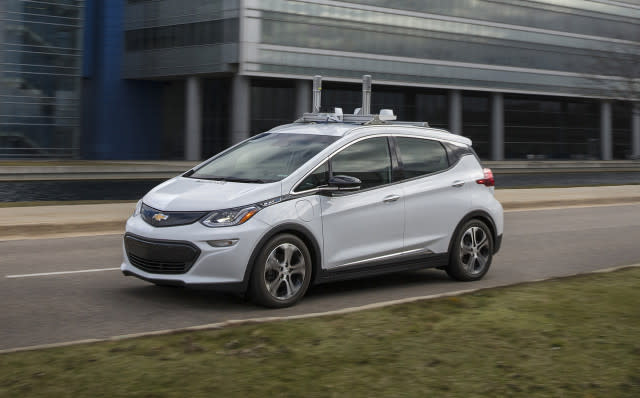Self-driving "drone" cars should be on California roads, except that they're not

Monday was supposed to be a big day for driverless cars in California that would make history and send fleets of self-driving vehicles onto roadways. Except it wasn't. History will have to wait.
April 2 was supposed to be the day that the California DMV would begin issuing permits to the 50 or so companies testing self-driving cars backed up by remote human operators. The problem? Only one firm has applied, and ABC7 reports that it's still in a holding pattern.
"When an application is received, it will be thoroughly reviewed," a Califoria DMV spokesperson told The Mercury-News. "The department will not approve any permits until it is clear that the applicant has met all of the safe operation requirements set forth in law and in the regulations.”
Firms testing self-driving cars have slowed testing after a fatal crash in Arizona last month between a pedestrian walking a bicycle and an Uber self-driving test car with a human driver on board. After the crash, Uber declared that it would not renew its California road testing permit until further notice. The company has halted all testing of its autonomous vehicles in North America.
Federal and local investigators are still digging into the Uber crash.
When driverless cars do take to the streets in California, the state will require them to be monitored by humans in a remote location that can immediately take over the car’s operation. California's rules effectively turn self-driving cars into drones.
Steve Shladover, a research engineer at the University of California-Berkeley’s PATH institute for advanced transportation technology who has studied self-driving car technology for decades explained that companies are still trying to work out some challenging wrinkles.
Shladover said that, among other things, researchers are still wrestling with how to replace human eye contact and other non-verbal communication between road users.
"That's gonna be challenging when we have a vehicle without a driver," he said. "How do you, as the pedestrian or the bicyclist, know whether that vehicle actually sees you?"
-- by Ruben Porras
Monday was supposed to be a big day for driverless cars in California that would make history and send fleets of self-driving vehicles onto roadways. Except it wasn't. History will have to wait.
April 2 was supposed to be the day that the California DMV would begin issuing permits to the 50 or so companies testing self-driving cars backed up by remote human operators. The problem? Only one firm has applied, and ABC7 reports that it's still in a holding pattern.
"When an application is received, it will be thoroughly reviewed," a Califoria DMV spokesperson told The Mercury-News. "The department will not approve any permits until it is clear that the applicant has met all of the safe operation requirements set forth in law and in the regulations.”
Firms testing self-driving cars have slowed testing after a fatal crash in Arizona last month between a pedestrian walking a bicycle and an Uber self-driving test car with a human driver on board. After the crash, Uber declared that it would not renew its California road testing permit until further notice. The company has halted all testing of its autonomous vehicles in North America.
Federal and local investigators are still digging into the Uber crash.
When driverless cars do take to the streets in California, the state will require them to be monitored by humans in a remote location that can immediately take over the car’s operation. California's rules effectively turn self-driving cars into drones.
Steve Shladover, a research engineer at the University of California-Berkeley’s PATH institute for advanced transportation technology who has studied self-driving car technology for decades explained that companies are still trying to work out some challenging wrinkles.
Shladover said that, among other things, researchers are still wrestling with how to replace human eye contact and other non-verbal communication between road users.
"That's gonna be challenging when we have a vehicle without a driver," he said. "How do you, as the pedestrian or the bicyclist, know whether that vehicle actually sees you?"
-- by Ruben Porras

 Yahoo Autos
Yahoo Autos 
